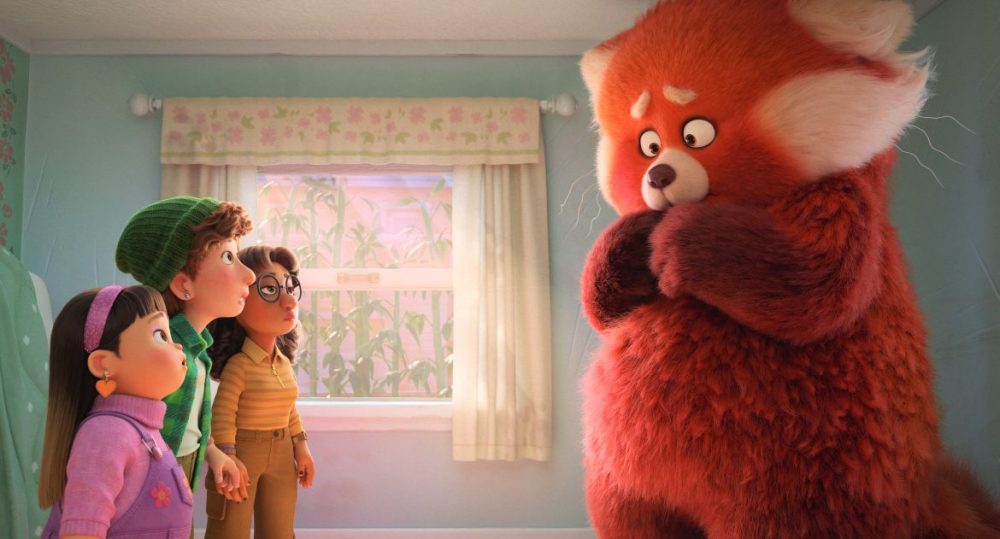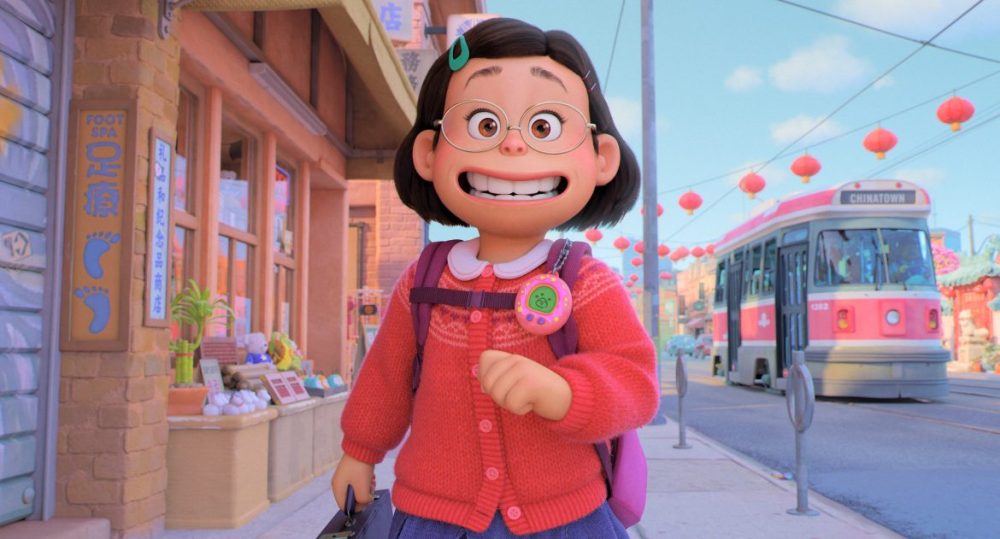TL;DR
Thirteen-year-old Meilin turns into a giant red panda when she's excited or scared, complicating her life and quest to see her favorite boy band. While Pixar usually delivers, this film's symbolism feels a bit too on-the-nose, and the story doesn't quite hit the emotional highs of their best work. Director Domee Shi's personal touch is evident, but the script could have been tighter. Despite not reaching Pixar's usual exceptional standard, *Turning Red* offers humor and impressive visuals, especially on Blu-ray with its extensive bonus features. Is it worth a watch? Dive into the full review to find out!
Thirteen-year-old Meilin (Rosalie Chiang) experiences a startling transformation one morning, finding herself turned into a giant red panda. She soon discovers that this change is triggered by strong emotions, particularly fear or excitement, leading to considerable disruption in her everyday life. Concurrently, she and her closest friends are eager to attend a concert by the wildly popular boy band 4Town. The challenge lies in their lack of funds and the reluctance of Meilin’s overprotective mother, Ming (Sandra Oh), to permit her daughter’s attendance. Meilin’s life has undoubtedly become complicated.
For me, the animation studio Pixar has consistently delivered top-quality productions. Films like Up, Wall-E, Inside Out, and numerous other titles released over the years have consistently impressed me, evoking the same emotional response with each viewing. Maintaining such a high standard over an extended period is challenging. While I appreciated Soul, it didn’t quite reach the exceptional level of films such as Inside Out and Up. Inside Out offers an incredibly insightful visualization of sadness and its potential to lead to depression, as well as the process of overcoming it. This film has resonated with me on many levels, revealing new relevance with each viewing.

Turning Red also employs symbolism, but in contrast to the sophisticated and ingenious approach of Inside Out, its symbolism feels somewhat overt and unsubtle. The intended meaning of the Red Panda is readily apparent upon initial viewing, and the symbolic representation is initially effective. However, the narrative takes a less compelling turn towards the end when the Red Panda is presented as representing inherent anger and destructive tendencies, which feels somewhat inconsistent. Furthermore, the depiction of Meilin monetizing her panda form by showing it off to classmates in order to earn money for the concert feels somewhat unseemly.
Director Domee Shi makes her feature film debut with Turning Red, for which she also wrote the screenplay. Notably, the film is set in the same year that Shi herself turned 13, mirroring the protagonist’s age. It is evident that this story holds personal significance for her, drawing upon her own childhood experiences. Unfortunately, the script’s execution is somewhat uneven, preventing the film from fully realizing its potential. The emotional depth and nuanced storytelling typically associated with Pixar are not as prominent here. This is particularly disappointing, as I greatly appreciated Domee Shi’s Pixar short film Bao, which tells the story of a living dumpling. That film exhibits the symbolic consistency and emotional resonance that I found lacking in Turning Red.

The Blu-ray edition of Turning Red includes a substantial amount of bonus content. The documentaries offer a detailed look into the extensive work involved in creating even relatively short scenes, providing valuable insight into the animation process. In addition, there are several deleted scenes and an informative commentary track. The video quality is consistent, with a high bitrate typical of digitally animated films in 1080p format. The colors are rich and vibrant, and the visually stunning scenes with intricate details are particularly impressive. The audio is presented in DTS HD 7.1, which, while somewhat front-focused, is certainly adequate. The Swedish dub is available in 5.1 and provides a satisfactory listening experience, with deep bass where appropriate. The voice acting in the Swedish dub is also well-executed, with appropriate casting choices for the roles.
In conclusion, while Turning Red may not rank among Pixar’s most outstanding achievements, even their less exceptional work remains quite engaging, offering several genuinely humorous moments. However, the film ultimately falls short of its full potential.
Disney provided review copies for this evaluation. Provision of these materials does not influence our editorial independence; our reviews are always conducted with the reader and consumer as the primary focus.
